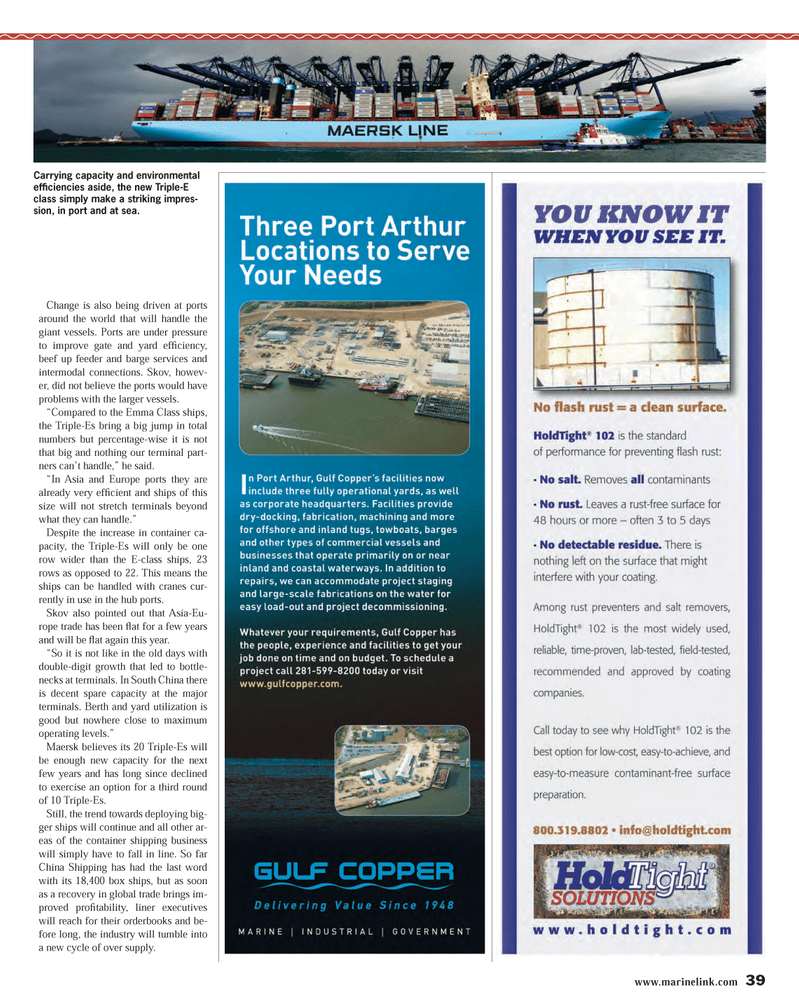
Page 39: of Maritime Reporter Magazine (October 2013)
Marine Design & Construction
Read this page in Pdf, Flash or Html5 edition of October 2013 Maritime Reporter Magazine
www.marinelink.com 39Change is also being driven at ports around the world that will handle the giant vessels. Ports are under pressure to improve gate and yard efÞ ciency, beef up feeder and barge services and intermodal connections. Skov, howev- er, did not believe the ports would have problems with the larger vessels. ?Compared to the Emma Class ships, the Triple-Es bring a big jump in total numbers but percentage-wise it is not that big and nothing our terminal part-ners can?t handle,? he said. ?In Asia and Europe ports they are already very efÞ cient and ships of this size will not stretch terminals beyond what they can handle.?Despite the increase in container ca-pacity, the Triple-Es will only be one row wider than the E-class ships, 23 rows as opposed to 22. This means the ships can be handled with cranes cur- rently in use in the hub ports. Skov also pointed out that Asia-Eu- rope trade has been ß at for a few years and will be ß at again this year. ?So it is not like in the old days with double-digit growth that led to bottle-necks at terminals. In South China there is decent spare capacity at the major terminals. Berth and yard utilization is good but nowhere close to maximum operating levels.?Maersk believes its 20 Triple-Es will be enough new capacity for the next few years and has long since declined to exercise an option for a third round of 10 Triple-Es. Still, the trend towards deploying big-ger ships will continue and all other ar- eas of the container shipping business will simply have to fall in line. So far China Shipping has had the last word with its 18,400 box ships, but as soon as a recovery in global trade brings im-proved proÞ tability, liner executives will reach for their orderbooks and be-fore long, the industry will tumble into a new cycle of over supply. Carrying capacity and environmental efÞ ciencies aside, the new Triple-E class simply make a striking impres- sion, in port and at sea. MR #10 (34-41).indd 39MR #10 (34-41).indd 3910/2/2013 10:40:49 PM10/2/2013 10:40:49 PM

 38
38

 40
40
